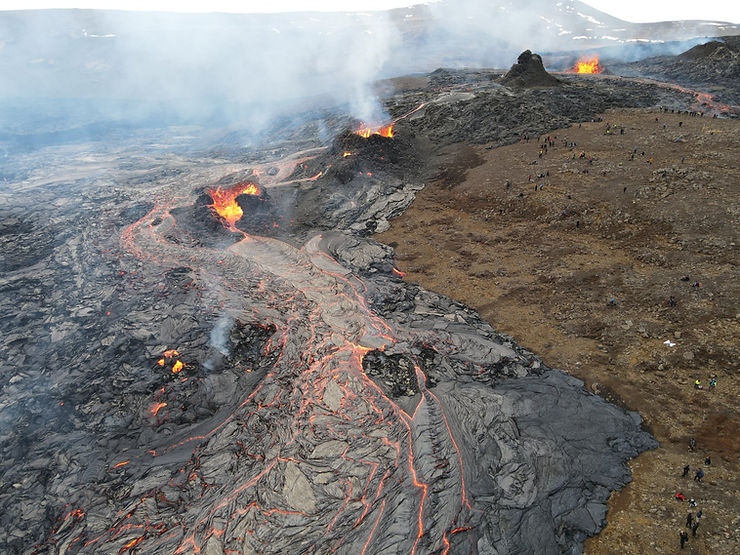By: Jerry Wang
In 2021, the Icelandic volcano, Fagradalsfjall, presented geoscientists with groundbreaking information.
Despite suspecting most volcanic eruptions of being caused by many smaller pools of magma mixing, Dr. Marshall of University of Iceland claims that, even after hundreds of eruptions catalyzed by magma mixing “[i]t’s never been directly observed.” Additionally, the mixing disposes of all chemical signatures.
Volcanic activities in Iceland are thought by Olafur Flovenz, leader of Iceland GeoSurvey, to be caused by carbon dioxide in the Mohorovicic discontinuity, also known as the moho.
Without the mixing of individual magma pools, Fagradalsjall is “[t]he first time, more or less, we are looking at an active eruption on our oceanic crust where the lava is directly erupting from the mantle source,” said Dr Flovenz.
With that, new information on how magma interacts with the crust and mantle can be learned. This is because of an isotope found in volcanic rock, oxygen-18. This isotope can be traced back to the mantle or crust. This would provide information on how the magma interacts and carries materials from the crust on its way from the mantle.
As a result, this unique magma also helped answer a multi-decade debate on the cause of Iceland’s low amounts of oxygen-18 in the country. It expedited this debate by debunking the idea that a lack of the isotope in the mantle caused the overall low levels in the entire area. Geochemists deduced that “[t]he depletion happens somewhere else.”
Best of all, this volcano has been relatively manageable. This makes studying and observing the activities safer and easier.
The idea of viewing freshly made lava makes this area a popular tourist destination recently, and the lava field is particularly spectacular since it is such a rare experience. Even tourists and locals are able to safely walk within 3 kilometers of the volcano.
However, Fagradalsfjall had remained dormant for six thousand years before 2021. Before its eruption, tourism in Iceland was considerably lower than it is now.
Still, many secrets such as the crystals in the lava remain unanswered. As Dr. Marshall puts it, “[i]t’s an absolutely amazing eruption for our field, and it’s one of those things that will be studied for a long time.” With the help of tireless geoscientists, the future is a mystery.
article: https://s3.amazonaws.com/appforest_uf/f1658688653049x483566818130665200/In%20Iceland%2C%20a%20Volcanic%20Eruption%20Brings%20Researchers%20Closer%20to%20Earth%E2%80%99s%20Core%20-%20The%20New%20York%20Times.pdf











